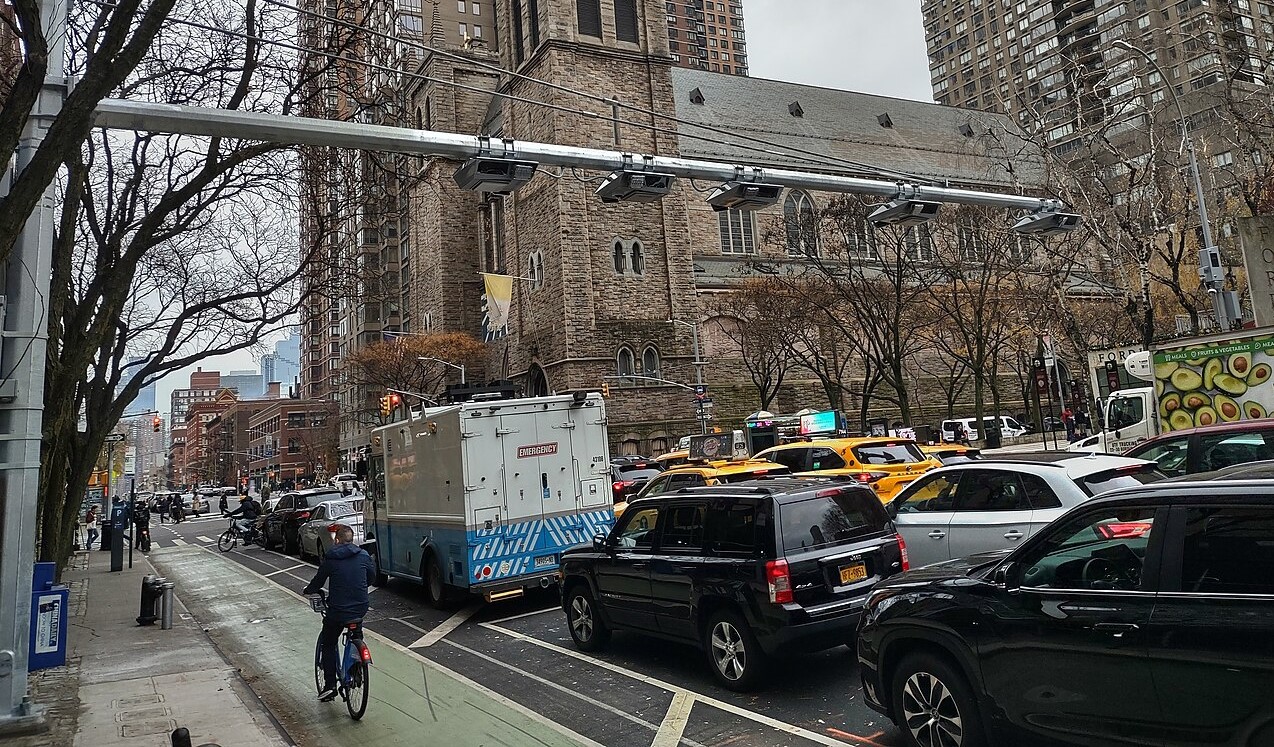City rankings that purport to reveal the best place to raise a family are ubiquitous. Where I live, in northeast Ohio, it's the homogeneous, sprawling suburbs that tend to be very proud of their positions on these lists.

Bradley Calvert at Family Friendly Cities examined the key criteria used by Apartment List to develop its "best cities for young families" report and found a gaping blind spot when it comes to the effects of car dependence. From his breakdown:
Safety (35%): Ranked by number of violent crimes and property crimes per 100,000 residents.
No one wants to live in an unsafe community and there is very little to dispute that. But limiting safety to crimes ignores the real dangers our children face. Most kidnappings occur by people that know the child and most of our large cities are now safer than they have been in decades. What these rankings intends to do is play into the perceptions of crime as the only danger that threatens our children. But in reality the biggest dangers are not factored in such as gun ownership rates and cars. Whether they are victims as passengers in collisions or victims as pedestrians and cyclists, cars represent a far greater danger to children than violent or property crime. This is something that most parents, who are auto dependent, are unwilling to admit or acknowledge.
Raising a child in an auto-dependent environment increases safety risks more than anything else. And while many may dispute this based on their perceptions and observations of street crime, facts are facts. Putting your child in a car is far more dangerous than walking down a city sidewalk. We can advance technology all we want when it comes to car seats but it still does nothing to predict and mitigate the behavior of the drivers around you. Safety rankings can never be taken seriously until they actually account for the greatest dangers. In order to accurately rank safety issues such as collision rates, street speeds, sidewalk prevalence, and pedestrian and cyclist injury rates must be accounted for. What we are likely to find is that many of our beloved and highly ranked sprawl communities wouldn’t rank so highly with their frequent auto collisions, lack of sidewalks and unsafe speed limits. In the case of Apartment List’s rankings, if they are to consider safety as the most important attribute to their ranking (35%), then they need to consider the elements that truly impact child safety.
Housing Cost (30%): Calculated the percentage of the average income required to rent the average two-bedroom apartment.
Whether considering rental rates or home sales prices, isolating the cost of housing automatically skews these rankings to favor smaller low density sprawling communities. Somehow we have successfully segregated the cost of housing and the cost of transportation though we are fully aware of their dependency on one another. And despite our awareness we view transportation as a fixed cost, one that cannot be changed, reduced, or eliminated while housing is something more flexible. Even in raising a family we prioritize the automobile over the home hoping to save a few bucks. In order to properly assess the cost of housing on a family, transportation costs have to be factored. The Center for Neighborhood Technology has an excellent resource, demonstrating how transportation expenses can quickly increase the cost of living even with inexpensive housing. The standard model of 30% of income being dedicated to housing is insufficient. A family in an urban walkable community spending 40% of their income on housing and a transit pass is in far better shape than the family dedicating 50% (or more) of their income to housing and transportation, even if housing only accounts for 30 percent.
In the case of Apartment Listing’s ranking this also skews the results in terms of renting and bedroom numbers. These can be skewed by an abundancy of low quality rental stock, popular in smaller communities that are more home owner dominated. Quality of housing stock needs to be considered equally as cost, particularly if these types of rankings are to truly serve their intent; to be a guide in helping a family select a community with quality housing that also fits a family budget.
Elsewhere on the Network today: The Dallas Morning News' Transportation Blog shares an unscientific poll that found a majority of downtown Dallas residents are "strongly opposed" to plans for a new urban tollway. The Overhead Wire says, logically enough, that the only cure for an urban housing shortage is more housing. And City Notes contrasts the "transit mindset" in Atlanta and New York City -- it's actually not as different as you might think.





